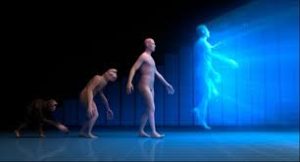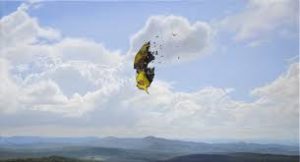In a fashion dreams allow for a curious mixture of learning processes, while at the same time serving to introduce surprising developments. That is, dreams promote the conservation of knowledge. They are an aid in the development of skills. They conserve available information by weaving it through the other structures of our experience.
At the same time dreams have their startling qualities, promoting the insertion of unexpected developments, in which case they appear to deal with the breaking down of conserving principles. In this fashion they also mirror our more exterior behavior, conserving what we know already, and yet introducing new patterns, new spontaneous orders that would sometimes seem to run against conservative issues. They reinforce the past, for example, when we dream of past situations. They also seem to undermine the integrity of the past by showing it to us in an unfamiliar light, mixing it with present and future tints.
Many people might wish that I would add many more methods to help study dreams and their nature. In such a manner also dreams suggest nature’s spontaneous order throughout the centuries, and allow us to look at the species in a truer light. Our lives, for that matter, are dependent upon the curious relationships that are involved: We would not get by for one day if the conserving principles and the unexpected did not exist exactly as they do. There is so much we must learn and remember in life, and so much we must spontaneously forget — otherwise, creation itself would be relatively meaningless.
We perform far more actions in a day than we recall. We do not know how many times we lift our arms, speak a sentence, think a thought. With the kind of consciousness we possess, an over-reliance upon conserving principles could then end up in a reduction of life’s processes.
In private living and in so-called evolutionary terms, however, life necessitates the intrusion of surprising events, unforeseen actions, leaps of insight or behavior that could not come alone from any accumulation of knowledge or simple conservation of energy, but seem to suggest entirely different new developments.
Dreams often serve as the frameworks in which sudden remarkable insights appear that later enable a man or a woman to envision the world in a way that was not earlier predictable. The world’s activities always include the insertion of surprising events. This is true at all levels of nature, from microscopic to macroscopic. All systems are open. The theories of both evolutionists and creationists strongly suggest and reinforce beliefs in the consecutive nature of time, and in a universe that begins in such-and-such an end — but there are horizontal events that appear in the true activity of nature, and there are horizontal entry points and exit points in all experience. These allow for the insertion of unofficial new energy, the introduction of surprising events.
Again, it is very difficult to explain such activities. They can affect — and do affect — the rise and fall of civilizations. We are used to reading nature in a particular manner, however, and to experiencing events at surface levels. We are naturally equipped to appreciate a far richer blend, and as I have often blogged about, we are ourselves possessed of a need to explore the subjective ramifications of our existence.
As “the times change” we tire of the old ways. Even our dreams begin to reach out into new avenues. The relationships between nature’s natural conservative behavior and nature’s need for innovation are stretched. More and more remarkable events begin to occur, both in private and mass experience, in physical and mental behavior, in the events, say, of both stars and human.
People want, then, to throw aside old structures of belief. They yearn, often without recognizing it, for the remembered knowledge of early childhood, when it seems that they experienced for a time a dimension of experience in which the unexpected was taken for granted, when “magical events” occurred quite naturally. They begin to look at the structure of their lives in a different fashion, that attempts to evoke from nature, and from their own natures, some graceful effortlessness, some freedom nearly forgotten. They begin to turn toward a more natural and a more magical approach to their own lives. At such times the conserving elements in nature and in society itself do not seem as strong as they did before. Surprising events that were earlier covered up or ignored seem to appear with greater frequency, and everywhere a new sense of quickness and acceleration gradually alters the expectations of people in regard to the events of their own lives, and to the behavior they expect from others. We are in such times now.
Old honored explanations suddenly appear withered. Unpredictable remarkable events seem more possible. The kind of work done in dreams to some extent is changed. They become more active, more intrusive. Predictable behavior, even of the natural elements, is harder to take for granted. Man begins to sense more and more at such times the vaster dimensions of behavior upon which that appearance of conservation resides.
There are considerable changes that occur under such conditions in man’s and woman’s subjective experience. Man’s and woman’s feelings about himself or herself change too, but little by little his and her trust in unpredictability grows. He or she is more willing to assign himself or herself to it. The species begins its own kind of psychic migration. It begins to sense within itself further frontiers and the possibilities for action. It begins to yearn for the exploration of mental lands, and it sends portions of itself out as couriers.
I am that kind of courier. There are many in all areas of life, and this involves not only an excitement on the part of our own species, but the same kind of curiosity and excitement on the part of other species as well. Again, most difficult to explain — but those connections that exist between all species and the environment are themselves affected. The horizontal communications stretch and expand to allow for later developments in terms of probabilities, for consciousness always knows itself in more than one context, and it is possible for nature to experience itself in ways that would seem to be most improbable when the properties of conservation and learning are at their strongest spring.









































































































